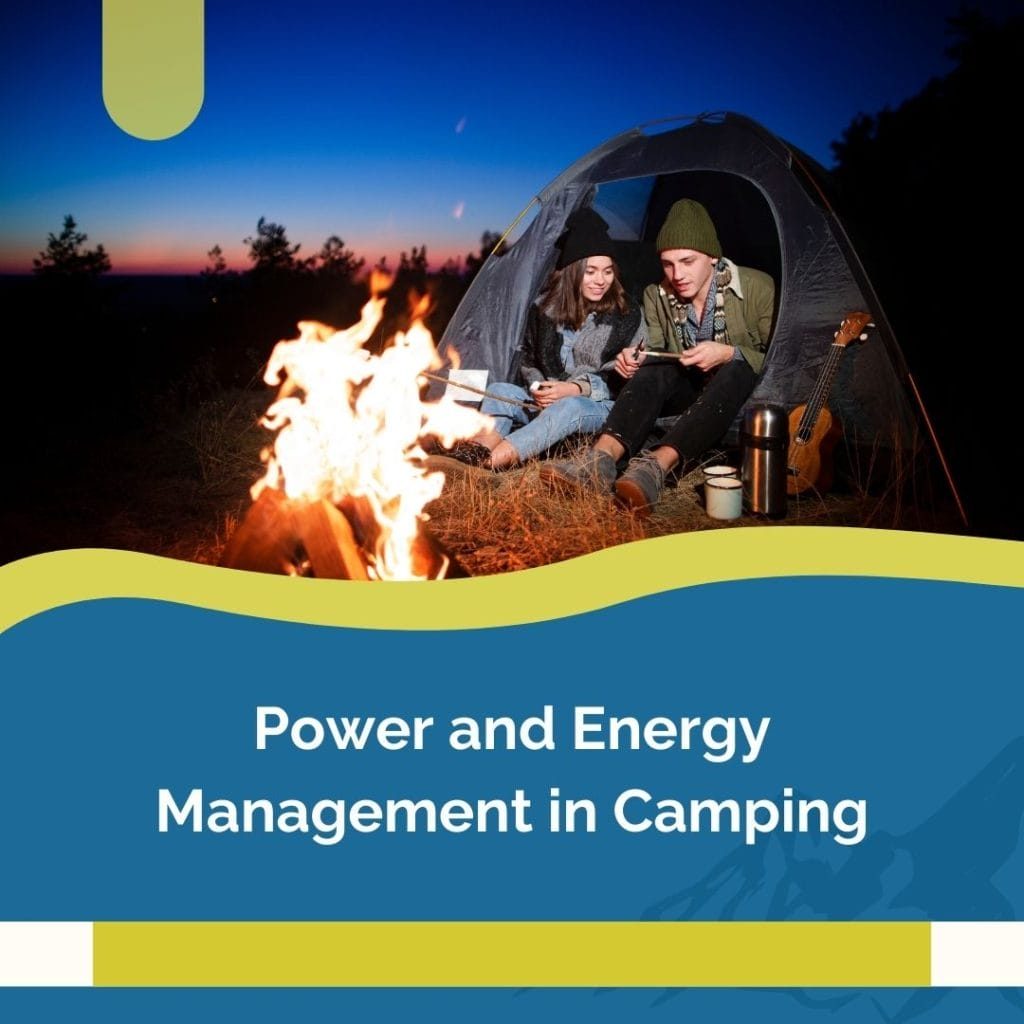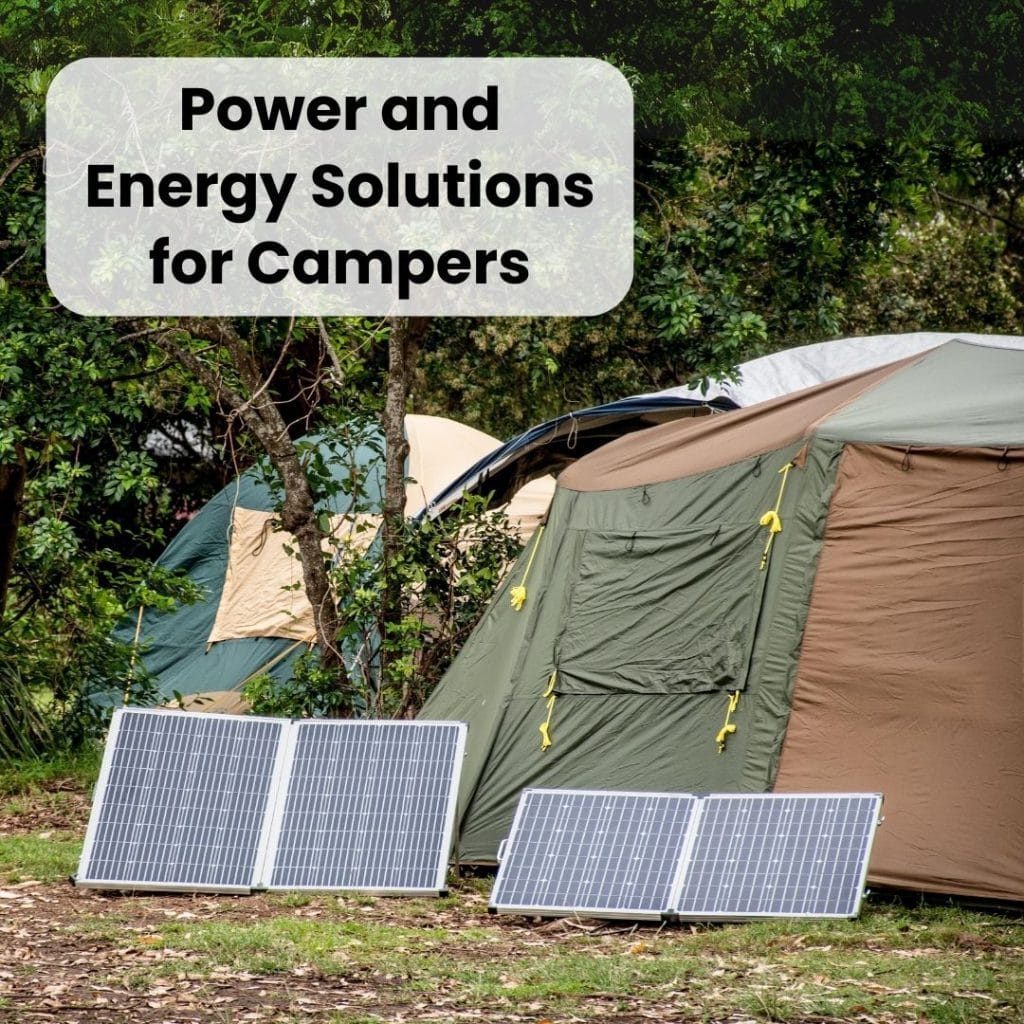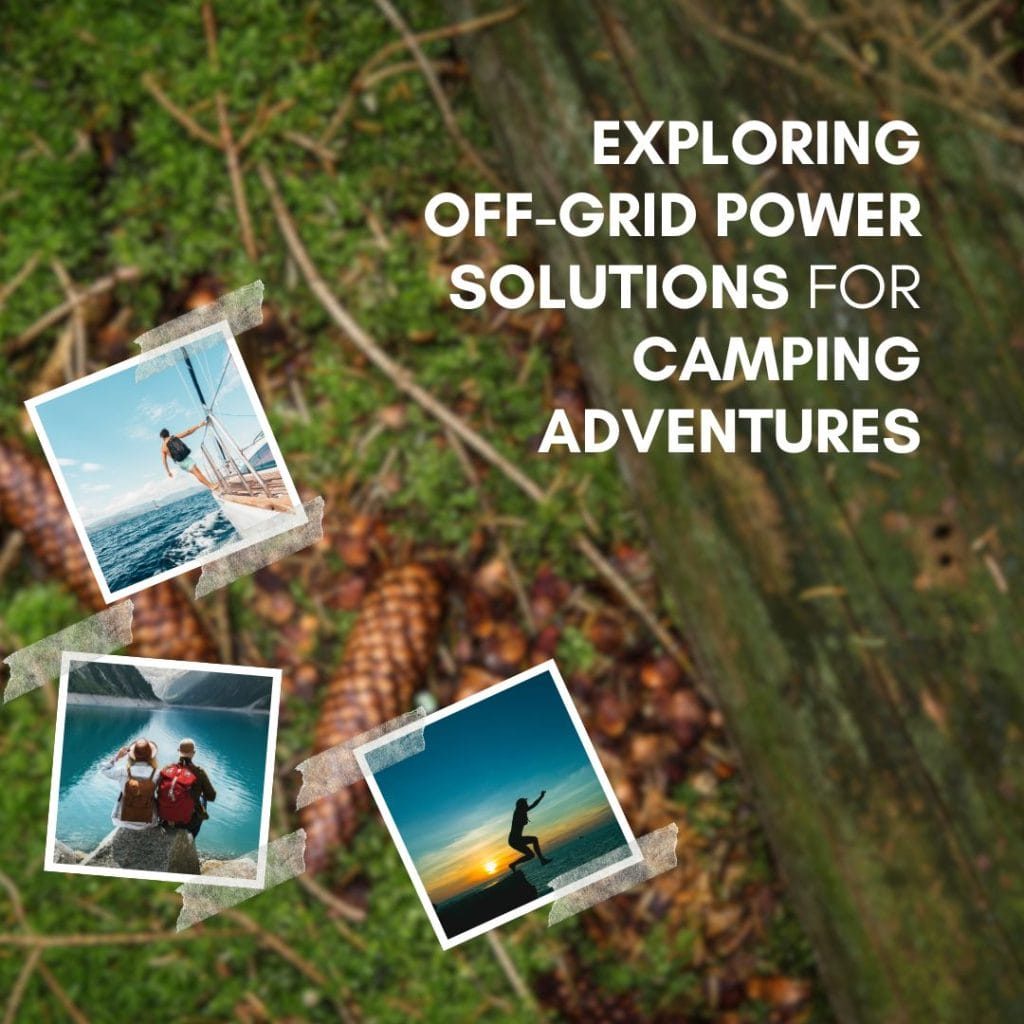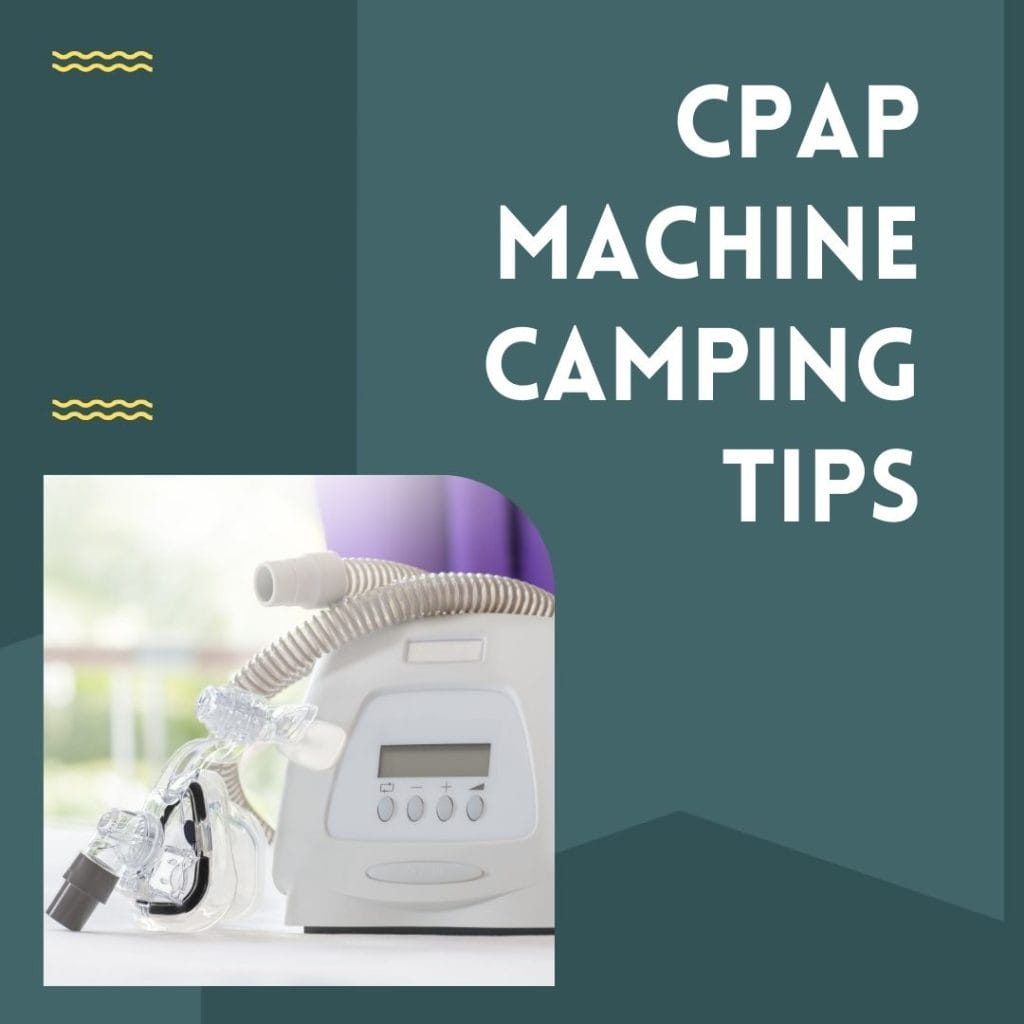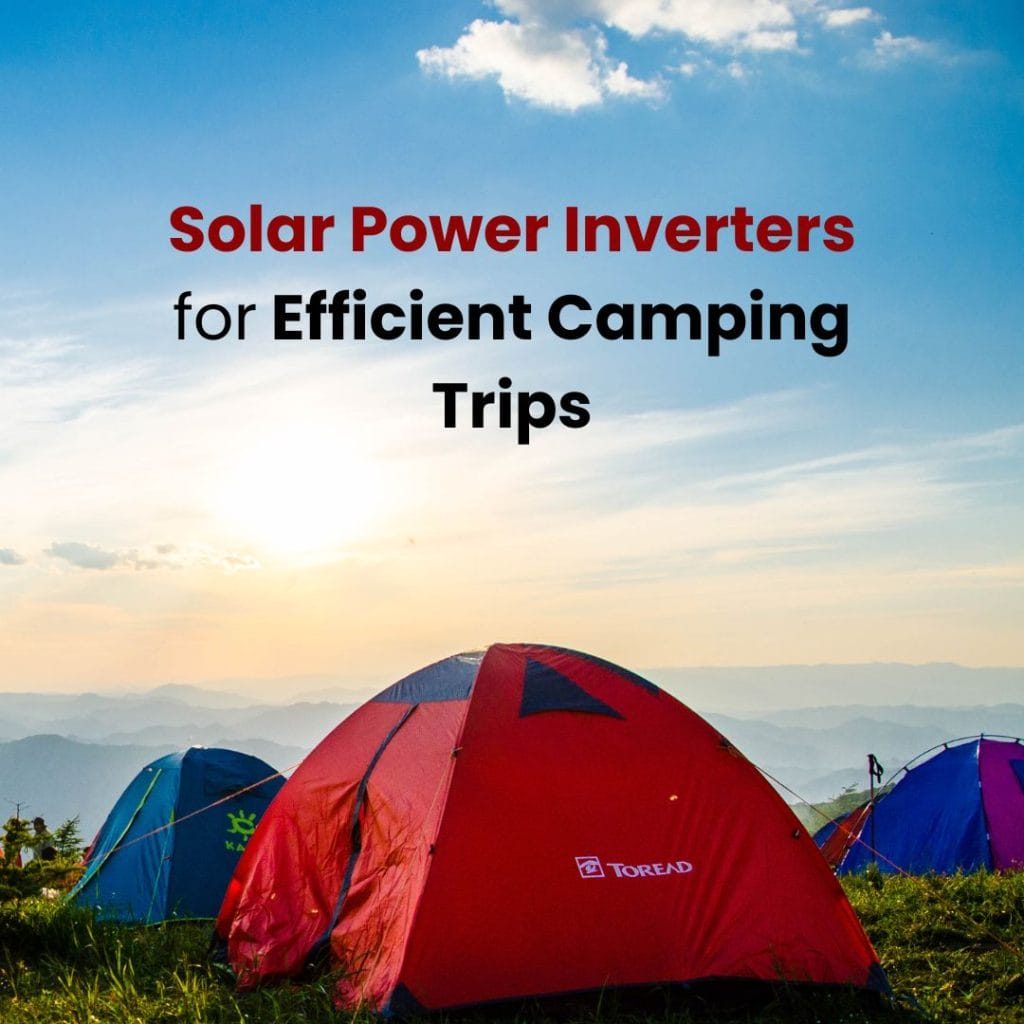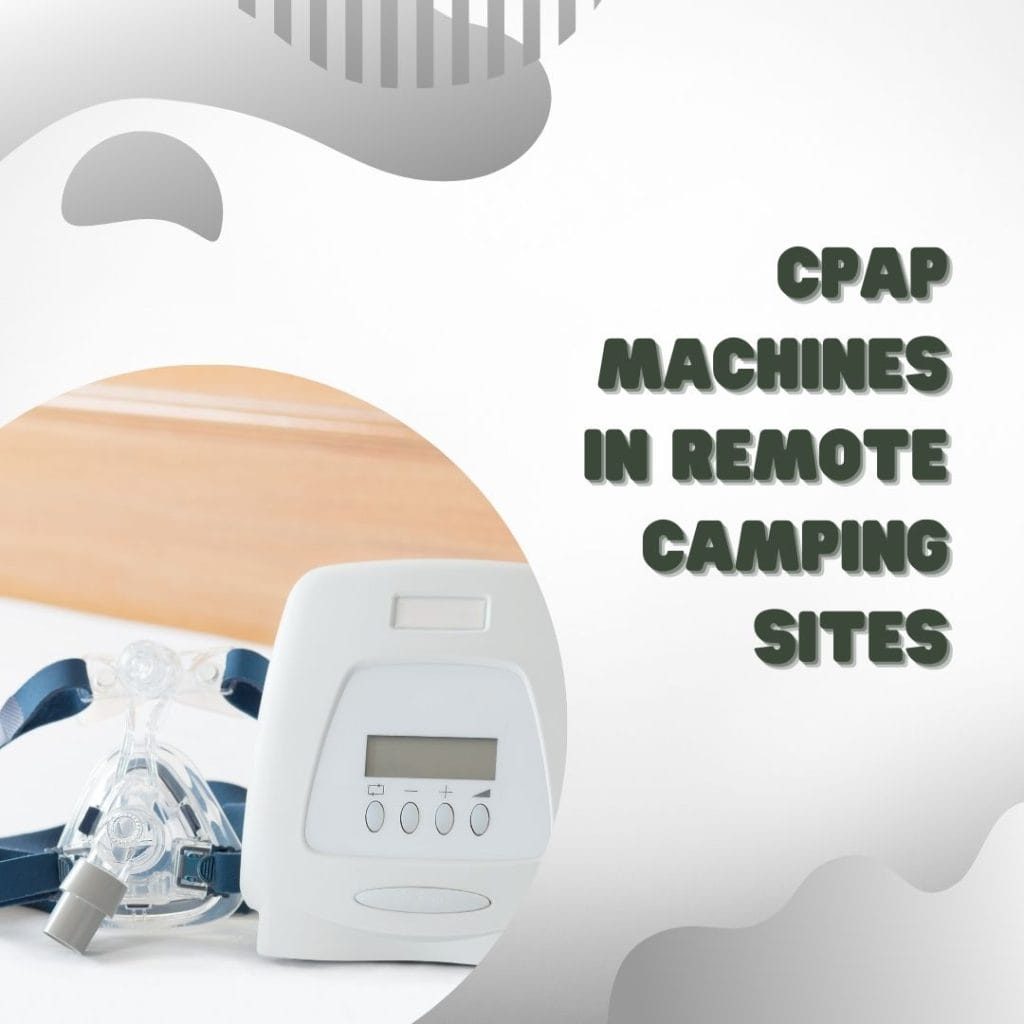Camping is a treasured outdoor activity, but for individuals reliant on CPAP machines, concerns about battery life can dampen the excitement. With strategic planning, maximizing your CPAP battery life while camping becomes manageable, ensuring uninterrupted therapy even under the stars.
Maximizing Battery Life for CPAP Machines During Camping Trips
Planning a camping trip with your CPAP therapy is no longer a worry, with our handy guide for CPAP camping:
- Key decisions to make involve choosing between a powered campsite or an off-grid experience. The CPAP battery can support you in the latter case.
- The choice of battery is critical. Deep-cycle batteries are best for longer trips, while CPAP-specific batteries are more suited for shorter stays.
- Be mindful of battery usage. Devices like a heated humidifier can drain your CPAP battery faster.
- Portability should be a priority. Travel-sized CPAP machines are convenient and often come with advanced features.
- Solar charging is a viable option. Solar panels can recharge your CPAP battery, thereby extending your time off-grid.
How to Power Your CPAP Machine While Camping
Camping while managing sleep apnea is not only feasible but can also be a highly enjoyable experience. Here’s how you can maximize your trip:
- Consider your camping location: You have two options when taking your CPAP on your camping trip. You could either choose a campsite with electrical outlets or go off-grid with a CPAP battery.
- Evaluate the pros and cons: Each option has its own merits and demerits, and we’ll delve deeper into these aspects later in this guide.
Let’s dive in and explore how you can make the most of your CPAP camping adventure!
Visit a Campsite With Power
Campsites offering power outlets present an attractive option for campers using CPAP therapy. Unlike off-grid campsites, these powered locations eliminate the need for many equipment compromises, especially for those requiring CPAP humidification. These campsites, such as KOA campgrounds and State Parks, provide ample electricity, thereby allowing you to plug in your CPAP machine.
Benefits
Choosing powered campsites comes with numerous perks. They are often maintained to high standards, offering clean surroundings. Additionally, they often provide extra amenities like bathrooms, showers, and even WiFi access.
Drawbacks
However, powered campsites do come with their own set of challenges. Popular weekends may see these sites fully booked, forcing a change in your plans. Also, they tend to attract a large number of people, which might not be appealing if you’re seeking a quiet, secluded camping experience. If you’re an adventurer who enjoys a rugged environment with breathtaking scenery and minimal human interaction, a powered campsite might not be your ideal choice.
For those who prefer a more isolated camping experience, exploring CPAP batteries for powering your machine off-grid is the way forward. This choice comes with its own considerations, such as the quicker drain of battery power when using a heated humidifier. This shortens your device’s runtime, reducing its therapeutic effectiveness. By understanding these factors, you can plan more effectively for your camping experience.
Take Your Therapy Off-Grid
CPAP batteries serve as a lifeline to those desiring a deeper connection with nature. While packing a CPAP battery allows you to venture further into the wilderness, it also imposes certain limitations on the duration of your trip. The typical CPAP battery pack will last for one to two nights before requiring a recharge.
If your camping itinerary includes long hikes or mountain climbs far from common amenities, it’s wise to carry multiple batteries. By having two or three batteries at your disposal, you can extend your remote camping adventure.
While the idea of skipping CPAP therapy for a few nights may seem attractive, it’s crucial to remember that continuous therapy ensures a more pleasurable experience. Choosing not to bring your CPAP machine might compromise the quality of your sleep and concentration, leaving you feeling less energetic and mentally agile. In contrast, successful CPAP therapy can enhance your sleep quality, mood, and energy levels, enabling you to fully enjoy your outdoor escapades.
Venturing off-grid with a CPAP battery is perceived by many camping enthusiasts as the true essence of camping, offering unparalleled freedom. Most batteries are FAA-approved for in-flight use and are compatible with popular CPAP and APAP brands. However, these benefits come with a few drawbacks. Certain Lithium-ion batteries may not perform well under extreme heat conditions, potentially leading to battery meltdown. While batteries provide essential power supply, they can also be costly, with prices ranging from $200 to $700. Lastly, your power supply may deplete faster than expected depending on your CPAP machine and settings, particularly if you’re using a power inverter.
Two Ways to Power Your CPAP Off-the-Grid
When camping off-the-grid with your CPAP, you have two distinct methods for powering your device:
- Utilizing a Deep-Cycle Lead-Acid Battery:
- Adopting a Portable CPAP Battery:
1: Using a Deep-Cycle Battery
Deep-cycle batteries, often available at auto parts stores as marine batteries or shops selling mobility scooters, are specifically designed for a long-lasting power supply. Unlike regular vehicle batteries, which deliver a high initial energy discharge and then recharge via an alternator, the deep-cycle variant provides continuous power for extended durations.
If the added weight isn’t a concern, these batteries emerge as a cost-effective and efficient solution to power your CPAP machine while camping off-grid, particularly if you’re RV camping.
To employ a deep-cycle battery for your CPAP, you need to follow one of these methods:
- Obtain a DC Adapter Cable and establish a connection using your machine’s DC Cable
- Make use of an Inverter
We’ll dive deeper into these alternatives in the subsequent sections.
Using a DC Adapter Cable
A DC Adapter Cable employs alligator clips to establish a connection with the positive and negative terminals of your deep-cycle battery, thereby enabling power output to a cigarette lighter plug. Consequently, you can connect your machine’s DC cable to the cigarette lighter plug, thereby powering your device. Intriguingly, some deep-cycle batteries come equipped with a built-in cigarette lighter plug, negating the need for an adapter, and affording you the luxury of plugging in directly.
Using an Inverter
An inverter plays a crucial role by transforming the DC power sourced from your battery into AC power that your machine can utilize. It’s important to note that certain machine models necessitate the use of a specific type of inverter known as a Pure Sine Wave Inverter. Without this, the machine may risk incurring damage. For the inverter to draw power from a car battery, it must be equipped with alligator clips that can be linked to the deep-cycle battery. Once connected, it converts the power to AC form, which allows you to plug in your machine just as you would in a typical household setting.
Despite these limitations, for those who can manage, a deep-cycle battery can serve as a reliable power source for travelers, trekkers, and campers.
- Weight Concerns: Car batteries are typically heavy and, consequently, not ideal for long distance trekking or backpacking. In contrast, Lithium-ion batteries are significantly lighter and more suitable for camping trips.
- Non-FAA Approved: Owing to the unstable and toxic chemicals contained in deep-cycle lead-acid batteries, they are prohibited for use on flights or in checked baggage. This restricts your ability to travel by air with these batteries.
- Charging Difficulties: Deep-cycle batteries can be challenging to recharge, which can potentially limit their usefulness on extensive camping trips.
2: Using a CPAP Battery Pack
The evolution of CPAP batteries has come a long way, with modern options being lighter and more affordable than ever before. This advancement has contributed to their rising popularity among users. However, it’s vital to understand that not all batteries are universally compatible.
Each battery often comes with DC inputs that are tailored for specific machines. In the absence of a DC input, the usage of an inverter becomes necessary.
CPAP.com simplifies the process of identifying the power requirements of your particular machine. This information is conveniently provided on our product pages under the “Power” tab.
It’s always advisable to connect to a battery that is specifically designed for your machine rather than attempting to adapt a battery of your choice to fit. The latter approach might not deliver the most optimised performance.
The Best CPAP Battery for Camping
Choosing the right battery for your CPAP machine can make a crucial difference to your camping experience. If your machine has a DC adaptor enabling you to power it from a 12V cigarette-lighter style socket, consider using the EXP96 Pro, our pick for the best CPAP battery for camping.
With a 307.2 Watt-Hours capacity, the EXP96 Pro can provide four to six full nights of CPAP therapy from a single charge (based on an average pressure setting of 5-10 cm H2O and with the humidifier disabled). This lithium-iron-phosphate battery can withstand extreme temperatures up to 132° F, outperforming the 104° F limit of traditional lithium-ion batteries. Additionally, it lasts significantly longer with a life cycle of 5,000 recharges, compared to the 500-charge lifespan of its lithium-ion counterparts.
Although the EXP96 Pro doesn’t have the versatility of the Portable Outlet UPS Battery that features a standard AC outlet, it trumps in energy efficiency due to its DC power usage. For added convenience, this battery comes with an optional solar panel charger, alongside the included AC and DC chargers. If you’re at a powered campsite, the EXP96 Pro can also double as a backup battery, automatically switching over during a power outage.
On the other hand, if your machine requires AC power or doesn’t have a DC adaptor available, we recommend the Portable Outlet UPS Battery for your camping trips. With features like a standard AC outlet, 3.0 A fast-charging USB port, and 159 Wh of capacity, this battery is recharged in 4-5 hours and can power your CPAP machine for one to two full nights before requiring a recharge. Although its capacity doesn’t match the EXP96 Pro, the Portable Outlet still stands as a solid option for those using a powered campsite, thanks to its backup battery functionality.
3 Tips for Bringing Your CPAP Camping
Tip 1: Consider Using a Portable CPAP For Camping
If camping is on your agenda, considering a travel-sized CPAP machine can bring significant benefits:
- Portability and Convenience: Compact and lightweight, these machines can fit snugly into small compartments, such as a backpack, without adding much extra weight. This allows you to bring along more camping gear than with a traditional home unit.
- Dual Functionality: With a travel CPAP, you can have one machine that works perfectly both at home and on the road.
- Advanced Features: Travel CPAP machines are often equipped with modern features that older models might lack.
- Versatility: These units make it easier to use your CPAP machine in different environments, be it a car, a plane, or a tent.
- Battery Compatibility: Though no CPAP machine comes with a built-in battery to date, many users find the combination of a travel CPAP machine and a separate travel battery a practical solution.
The Best Portable CPAP For Camping
Opting for a travel-sized CPAP machine greatly improves the overall camping experience for sleep apnea sufferers. These machines are not only lightweight and compact, but they are also highly efficient and tend to have a longer battery life compared to their full-size counterparts. This makes them ideal for campers who prefer to run their machines off battery power.
Though the comfort of humidification might be compromised with these travel-sized machines, innovative solutions have been incorporated into some models. Both the AirMini and HDM Z2 Auto models offer waterless humidification, a feature coveted by many users.
The AirMini operates with an AirSense 10-derived auto-adjusting algorithm and utilizes HumidX waterless humidification. However, when it comes to the best portable CPAP machine for camping, the HDM Z2 Auto takes the lead.
The Z2 Auto is equipped with a heat-moisture exchange unit, serving as a form of waterless humidification. This unique feature recirculates moisture from your breath back into your system, preventing dry mouth. With a weight of just 10.5 oz, the Z2 Auto stands out as an excellent CPAP machine for backpacking. The need to carry distilled water is eliminated, further reducing weight and saving space.
Despite its compact design, the Z2 Auto is incredibly quiet, thanks to the inclusion of the QTube in-line muffler. This minimizes hose noise between your mask and the machine, ensuring a restful night’s sleep. Unlike the AirMini which relies on a smartphone app for setting adjustments, the Z2 Auto has an easy-to-navigate screen that displays pressure settings and other relevant information.
Adding to the Z2 Auto’s versatility is its Bluetooth capability and a companion app for tracking comprehensive therapy data. The machine is designed to start therapy automatically once you put on your mask and begin breathing.
Lastly, the Z2 Auto can be paired with the optional Z2 PowerShell with Extended Life Battery. This serves as a convenient power source for your machine when an AC outlet is unavailable. The PowerShell can also function as a backup battery and allows for quick and easy battery changes if you have multiple Z2 Extended Life Batteries at hand.
Tip 2: Avoid Using Power Inverters
Relying on power inverters can be counterproductive when using a CPAP machine in a camping context. Inverters draw power from the battery to convert DC to AC, which means both your machine and the inverter are utilizing battery resources. This dual draw can potentially drain your battery at twice the typical rate.
In certain scenarios, using an inverter becomes unavoidable. Some CPAP machines are not compatible with DC power and hence require an AC source, necessitating a battery-to-AC power conversion.
To mitigate this issue, the optimal approach is to opt for a battery specifically designed for your machine model. For instance, the Pilot-24 Lite, tailored for the AirMini and other 24-volt machines, comes with a direct cable connection. This eliminates the need for a power inverter, thereby prolonging your battery life.
Tip 3: Consider Charging Your Battery With Solar
Solar charging may not be everyone’s go-to option, but it can be a real lifesaver for those who frequently venture off the beaten path. Although there aren’t many choices currently available, the EXP 360 Solar Charger for EXP batteries is among the top contenders.
Regrettably, it can be a challenge to find suitable solar charging solutions, as they tend to be battery-specific rather than universal. Solar panels, however, offer the remarkable advantage of charging your battery while you spend the day exploring and appreciating the beauty of nature.
When the day ends and you return to your campsite, your battery will be fully recharged and ready for another night of sleep apnea therapy. Solar panels can thus help you extend your camping adventures and enjoy more time in the great outdoors.
Conclusion
In conclusion, maximizing your CPAP battery life during camping involves careful selection of a portable CPAP machine, avoidance of energy-draining power inverters, and consideration of solar charging options. By adopting these strategies, you can ensure uninterrupted sleep apnea therapy in the great outdoors. Remember, a successful CPAP Battery Life Camping experience is all about planning and adaptation, ensuring you get the rest you need while enjoying nature’s splendor.

